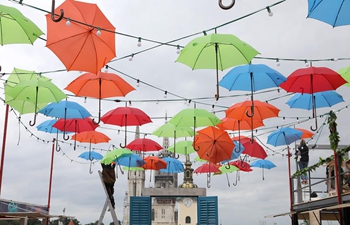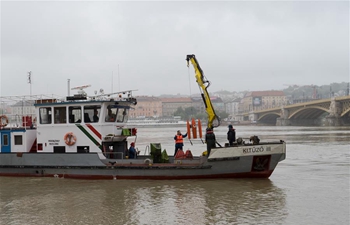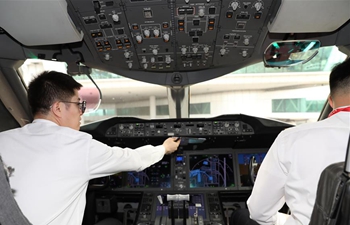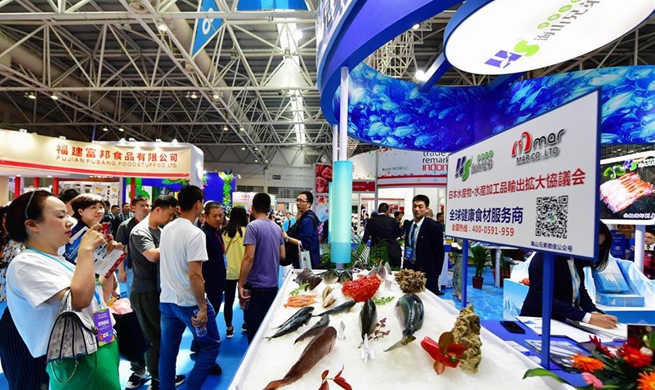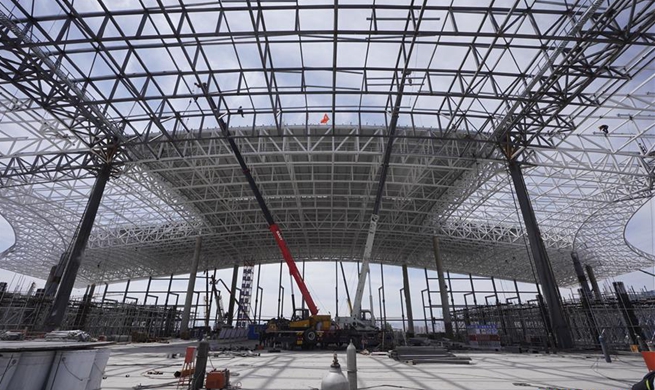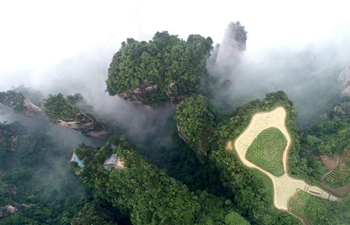by Zhou Shengping, Shristi Kafle
SINDHUPALCHOWK, Nepal, May 31 (Xinhua) -- Driving his truck over the Friendship Bridge that connects China's Tibet's Nyalam County and the Sindhupalchowk District of Nepal's Province 3, four years after it was closed down, made one veteran driver here extremely happy.
Bhan Bahadur Tamang, 56, a veteran local driver with more than three decades experience, could not contain his happiness as he made the trip Wednesday once again after so many years.
On that day, China's Zhangmu-Nepal's Kodari border port, a vital gateway responsible for 90 percent of road trade volume between these two countries before the 2015 earthquake, formally opened for test runs of cargo services against a backdrop of ceremonial fanfare held on the bridge.
Tamang's truck was among four loading goods that passed the port from China's to Nepal's side, the latter of which forcefully closed the port after the devastating earthquake that killed around 9,000 people.
About three hundred Nepalis were seen holding the colorful flags of Nepal and China together and wearing wide smiles on their faces near the bridge.
Another driver, 54-year-old Man Bahadur Tamang, a resident of the Bhotekoshi rural municipality, was in the crowd to witness his colleague completing the test run during the reopening ceremony.
"The border is our lifeline. We just want the border to be resumed permanently so that we can sustain our lives by doing all sorts of work," Man told Xinhua at the ceremony.
Man, who owns his own truck, explained that their locality, which is geographically fragile, has minimal agricultural production and thus the only way to make a living is to run small businesses, shops, hotels, and other tourism-related activities near the border.
Raj Kumar Poudel, chairman of Bhotekoshi Rural Municipality, told Xinhua that the rural municipality was home to around 17,000 people before the earthquake.
Unfortunately, the closure of the port after the disaster made the once prosperous town largely deserted, with around 50 percent of the people returning to their own settlements.
China is the second largest trading partner of the Himalayan country in terms of imports. In the absence of the Tatopani border point, trade has been taking place through the Gyirong-Rasuwagadhi border point, which is around eight hours drive away from the capital.
For heavy trucks, however, it can take up to two or three times as long to get to, compared to Tatopani.
Bachhu Poudel, president of the Nepal Trans Himalayan Border Commerce Association, told Xinhua, "The Tatopani border is best in many ways. It can save a huge amount of time and money for traders."
At least 1,400 large and small containers passed through the Tatopani port in the past. Only half the volume has been passing through Rasuwagadhi up until now, with many having been sold and a few remaining idle.
Along with the reconstruction of historical Friendship Bridge which is some 114 kilometers away from the Nepalese capital, the Chinese side has also constructed some parts of the Araniko highway and built a modern frontier inspection station to expand bilateral trade by reducing the cost and time of cargo handling.
However, traders believe that there are still many challenges remaining before smooth trade can be achieved, including the complex geography of the region, which is prone to natural disasters including landslides and floods.
Arjun Bahadur Sapkota, president of Nepal Truck Container Transport Service Ltd., said, "The Chinese side has constructed the road well, but there will always be concerns about monsoons affecting transport."
